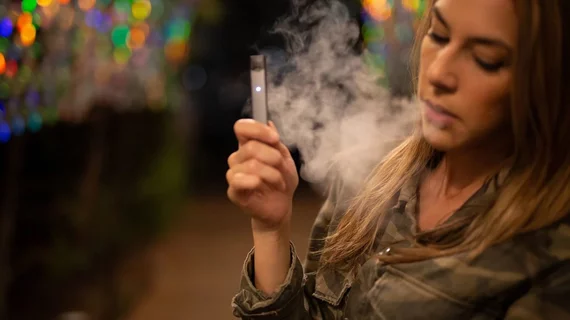Vaping THC produces a pattern of ground glass opacities
Acute pulmonary injuries caused by vaped cannabinoid oils seem to have a predictable radiographic pattern on chest CT: ground glass opacities dispersed across both lungs except in the extreme peripheries, where the features turn up only sporadically if at all.
So found researchers at Albany Medical College in New York when they examined five recent cases at their institution. The team had its study posted online Nov. 18 in the American Journal of Medicine.
Edward Conuel, DO, and colleagues report that all five patients presented with labored breathing, fatigue and hypoxia; all five had used e-cigarettes containing marijuana-derived oil within the previous three to six months; and all were eventually discharged without need for breathing assistance beyond an asthma inhaler.
However, four required inpatient oxygen treatments and three of these patients were initially cared for in the ICU, albeit without need for mechanical ventilation.
The three especially acute patients underwent bronchoalveolar lavage (BAL), which entails passing a scope through the mouth or nose and into the lungs, and this test revealed white blood cells heavy with lipids in two of them.
In their discussion, the authors note the unclear anatomic mechanism behind lung injuries associated with cannabinoid oil vaping.
“As two out of our three cases that underwent BAL revealed lipid-laden macrophages, this may suggest that this injury is a form of lipoid-pneumonia from aerosolized cannabinoid oils,” Conuel et al. wrote. “It may be that these oils are particularly toxic, especially with street-obtained formulations.”
The authors add that, if the radiographic pattern they found across their five cases aligns with similar findings observed elsewhere, then “an adequate diagnostic approach to this condition may include a bronchoscopy with BAL without lung biopsy, as this approach may reliably exclude alternative potential causes.”

